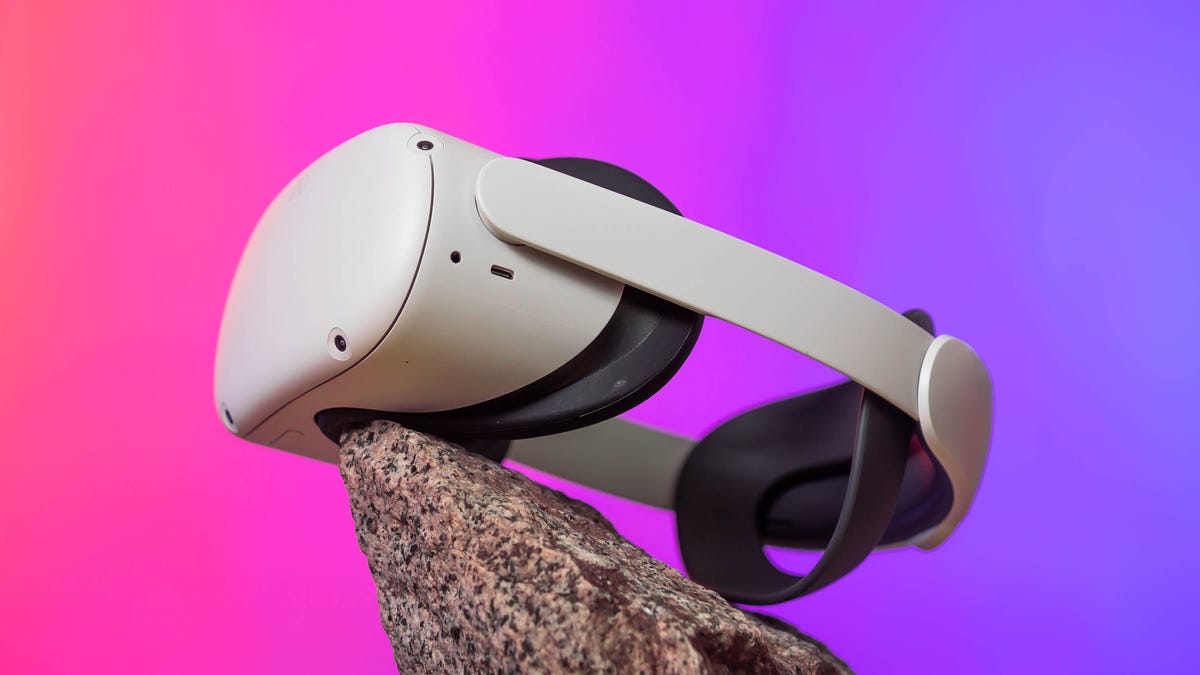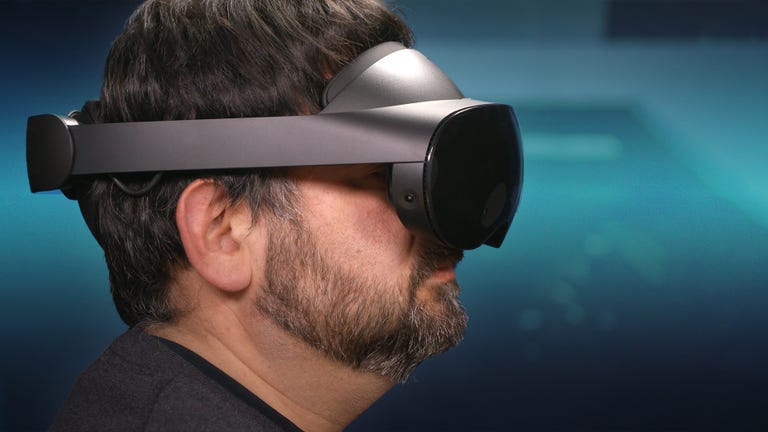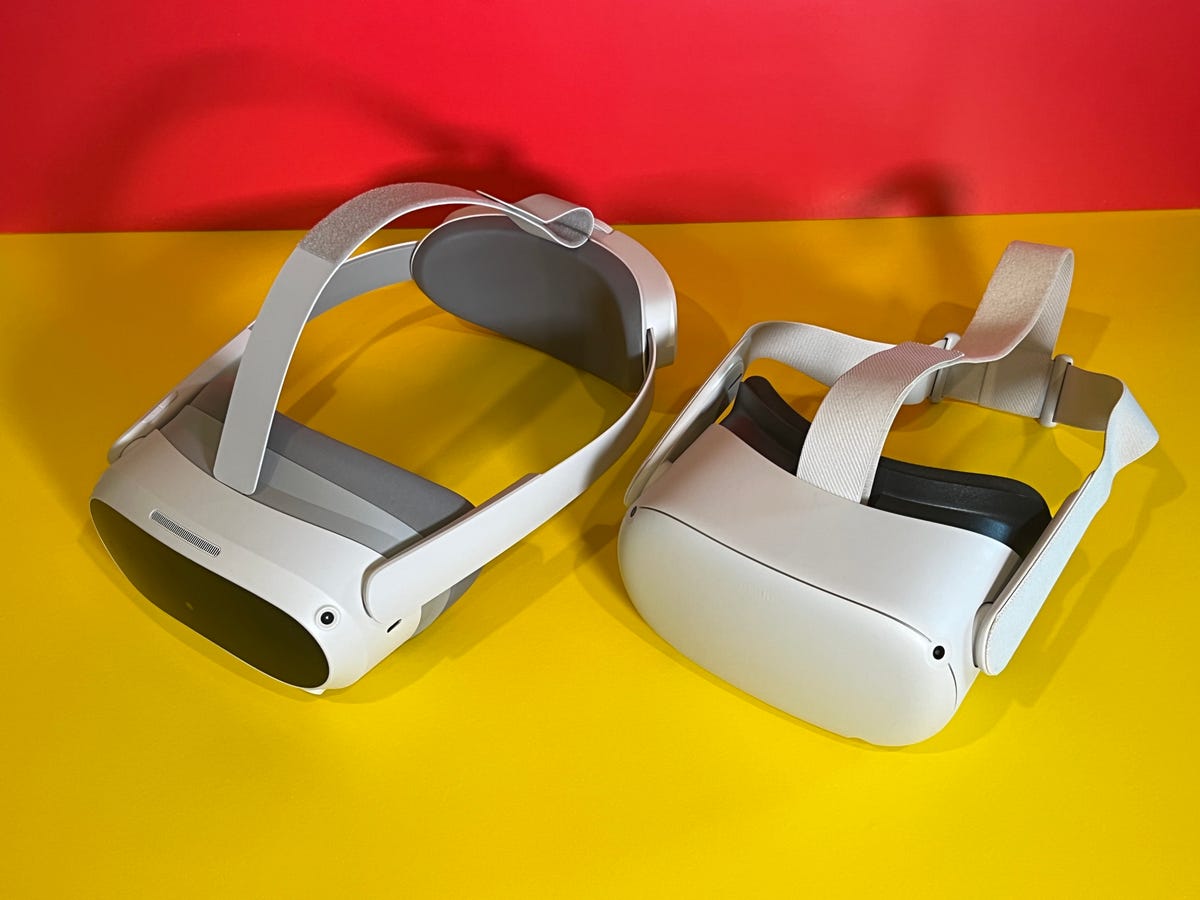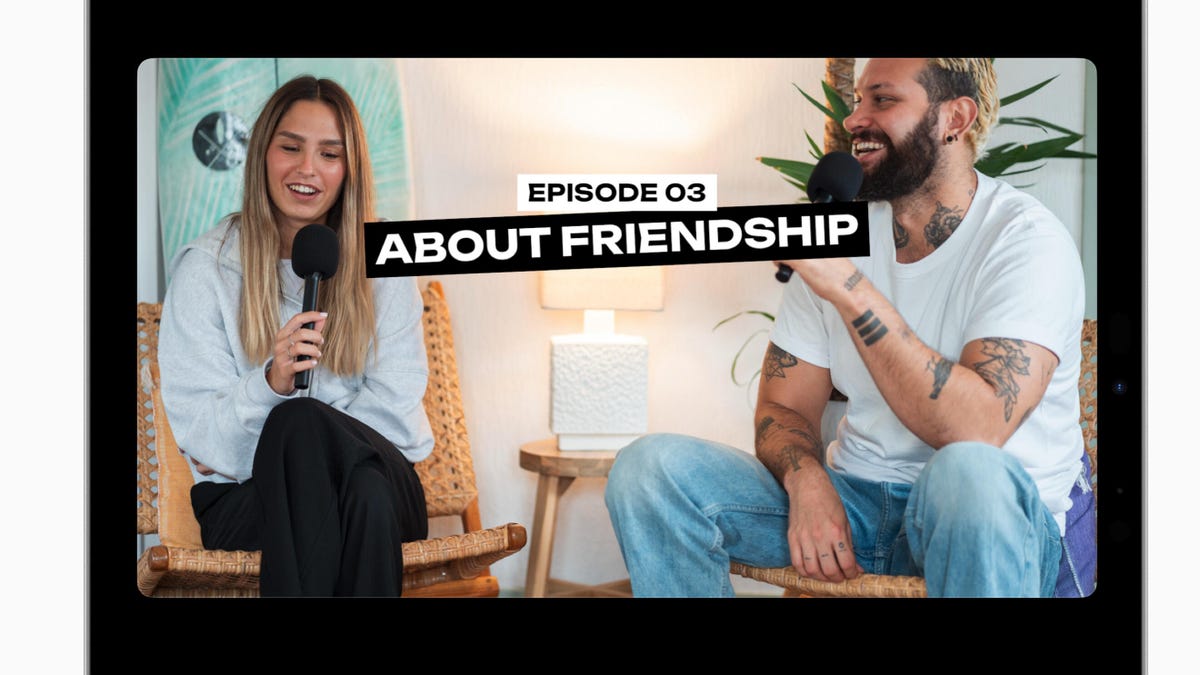Technologies
Meta Quest 3: What to Expect in 2023
Meta’s next headset should be a lot less expensive than Apple’s, and is arriving this year. Could it have an edge?

This has been a big year for new VR headsets: the PlayStation VR 2 and Vive XR Elite are already here, and Apple’s mixed reality headset should be announced in a matter of weeks. The biggest product of all of them, however, could be the Meta Quest 3.
Meta’s sequel to the most popular VR headset in the world right now will be a 2023 product, and Meta’s Mark Zuckerberg has already confirmed it will be priced similarly to the Quest 2. That should mean it’ll be a far more affordable headset than what Apple is readying.
Will it also be the best? Here’s what we expect.

The Quest Pro (left) next to the Quest 2 (right). The Quest 3 may be smaller in the front like the Pro, but with the Quest 2’s elastic head straps.
Price: Somewhere around $400?
Meta’s work-focused Quest Pro headset that debuted last fall was a misfire, starting at $1,500 and now reduced to $1,000. Meta’s Quest 3 should fall in line with the $400 price of the Quest 2 headset (although that’s an increase from the Quest 2’s original price of $300). Although considering it will likely have better performance and features, it could end up being a little more expensive.
That price would be less than the PlayStation VR 2, which also needs a PlayStation 5 to work. And it would likely be thousands of dollars less than what the Apple headset is expected to cost, which many industry watchers are pinning at $3000.

06:31
Features: Mixed reality, but maybe not eye tracking
The future of VR is already moving towards mixed reality, blending VR with real-world surroundings using passthrough cameras projecting real-time footage in-headset. The Quest Pro and Vive XR Elite already do it, and Apple’s headset is expected to do the same.
The Quest 3 should have color passthrough cameras, much like the Quest Pro, Vive XR Elite and Pico 4 do. The Quest 2 has only a basic monochrome passthrough camera. The Quest 3 could also have better depth sensing capabilities, either through improved on-headset sensors or computer vision algorithms. Meta’s selection of mixed reality apps is pretty bare right now, but a mainstream Quest 3 that also taps into the possibilities could spark a lot more apps and games.
VR/AR YouTuber Bradley Lynch detailed a bunch of Quest 3 features last year based on leaks from Meta, which details a lot of what to expect: a depth sensor is planned to be onboard.
Eye tracking may be left out. The Quest Pro has eye tracking and face tracking, which can be turned off in settings and isn’t used for all apps. The PlayStation VR 2 uses eye tracking frequently to optimize graphics performance, but it’s also tethered to the PS5, and doesn’t have to deal with battery drain concerns. The Quest 3 might skip the feature to save on cost, or perhaps because Meta isn’t ready to deal with the privacy ramifications yet.
A new processor is expected, though. The aging Snapdragon XR2 chip could get a true follow-up (reports say it’ll be a Qualcomm Snapdragon XR2 Gen 2), improving graphics and speed for the new headset, and maybe battery performance as well. Qualcomm already has a multi-year partnership with Meta, unveiling new XR chips that will roll out to other devices in the future. This could be the debut of a new chip, much like the XR2 was for the Quest 2.
Storage sizes and RAM might be upgraded as well, according to Lynch’s report from last year, with a 512GB storage option finally becoming available.

The Pico 4 (left) is significantly smaller in the front than the Quest 2 (right), but the battery gets moved to the larger back strap. The Quest 3 should also be smaller, with the battery staying in the front.
Slimmer design
Meta’s improved «pancake optics» lenses for the Quest Pro slimmed down the front of the VR headset versus the Quest 2, with a clearer lens to boot. The Pico 4 headset, another affordable Quest 2-range VR headset, added pancake optics last year. The Quest 3 should get this upgrade too, adding up to a much smaller headset size than the Quest 2.
Smaller could mean more portable. Will new cases and accessories emphasize this? Being able to take a Quest 3 on trips more easily would be a big advantage. HTC’s Vive XR Elite folds down into the size of a pair of (big) glasses, with an optional tube-shaped carry case.

The Quest Pro controller (right) is a big redesign over the Quest 2 controller (left).
It could work with Meta’s new Quest Pro controllers
Meta updated its controllers with the Quest Pro, adding cameras for better tracking consistency and shrinking down the size. These controllers are currently an expensive upgrade for Quest 2 owners, they sell for $300 separately, but would Meta include them with the Quest 3? Or could they still be optional upgrades?
Another possibility could be another redesigned set of controllers. Meta doesn’t seem ready to get rid of controllers completely for the Quest, although that seems to be the long-term strategy as hand tracking continues to improve.
Lynch also showed leaked looks at the headset last year that suggested the Quest 3 might charge in the current Quest Pro dock.
Games should be a major focus, once again
Meta’s experiments in work and social apps – aka, the metaverse – haven’t taken off, which means gaming is still the biggest use for the Quest 2 (along with fitness). Meta’s upcoming games showcase on June 1 is emphasizing that the Quest 2 is, first and foremost, a game console.
With an expected fall debut, the Quest 3 will likely be positioned again as a game console with a lot of potential fitness, work and social benefits. It’s Meta’s safest bet, and with its expected console-level price, not an absurd proposition in a year where there aren’t expected to be any other new game console debuts to compete with.
Will Quest 3 spark a wave of mixed reality apps?
The Quest 3’s bigger mixed reality focus, and its lower price than the Quest Pro, should finally trigger a wave of new apps that aim to use mixed reality more often. It’s the Quest 3’s biggest new feature, and with Apple likely to show off mixed reality quite a bit as well, it might mean developers are finally going to think in a more AR-like mindset. It’s Meta’s biggest opportunity to try to advance the Quest experience beyond its VR-minded status.
If you’re looking to buy a headset, you should wait
At this point, the fall isn’t far away. The Quest 3 looks like it’ll be the best Meta VR headset, and could be one of the best options for its price when it arrives. Anyone looking for a headset right now should hold off and see what’s coming, especially with both this and Apple’s headset on the horizon.
More on virtual reality and VR gaming
Technologies
Apple Crowns Its Top Apps of 2025, and AI Dominates the Field
Tiimo, a visual planner for people with ADHD that uses AI, won the App of the Year award.

Apple named the 17 winners of its 2025 App Store Awards on Thursday, and AI made its presence felt. App of the Year Tiimo, created for folks with ADHD, is an AI visual planner; iPad App of the Year Detail uses AI to simplify video editing; and Mac App of the Year Essayist employs AI to ease «the time-consuming work of formatting academic papers.»
Apple began giving out App Store Awards over a decade ago, with recent App of the Year winners including Kino (2024), AllTrails (2023), BeReal (2022), Toca Life World (2021) and Wakeout! (2020).
Don’t miss any of our unbiased tech content and lab-based reviews. Add CNET as a preferred Google source.
It’s apparent from this year’s selections that the AI juggernaut will continue growing in global influence. The Business of Apps, a B2B media and information platform, estimates that the AI app sector generated $4.5 billion in 2024 — more than half of that via ChatGPT — and that nearly 700 million people used AI apps in the first half of 2025. The website predicts that the AI app sector will exceed $150 billion in revenue by 2030.
(Disclosure: Ziff Davis, CNET’s parent company, in April filed a lawsuit against OpenAI, alleging it infringed Ziff Davis copyrights in training and operating its AI systems.)
«Every year, we’re inspired by the ways developers turn their best ideas into innovative experiences that enrich people’s lives,» said Tim Cook, Apple’s CEO. «This year’s winners represent the creativity and excellence that define the App Store, and they demonstrate the meaningful impact that world-class apps and games have on people everywhere.»
‘For brains that work differently’
Tiimo is based in Copenhagen and was co-founded by Helene Lassen Nørlem and Melissa Würtz Azari to create planning tools for individuals with Autism, ADHD, neurodivergence and executive functioning differences. The company website says its app’s tools «are adaptive by design; visual, flexible, and grounded in how neurodivergent people really plan, think, and follow through,» and notes that the app is «for brains that work differently.»
The app originated as a research project exploring how tech could support neurodivergent teens, but Würtz Azaritransformed that into a business after being diagnosed with ADHD and dyslexia, according to the company.
Tiimo’s App of the Year honor comes a year after the app was named a finalist in the 2024 Apple Design Awards in the inclusivity category.
Würtz Azari said Tiimu succeeds because its developers «challenge that status quo» of how apps typically present calendars, to-do lists and focus tools. We «integrate focus timers into tasks, add small celebratory cues, and build subtle improvements that make it easier to stay organized,» she said.
Tackling the citations beast
Anyone who has done a research paper or term paper knows how incredibly annoying and time-consuming it is to do citations.
Essayist, the Mac App of the Year, utilizes AI to «insert citations seamlessly,» for APA, MLA, Chicago/Turabian and Harvard citation styles. The app also eases the processes of adding references and formatting papers.
Video editing made AI easy
The Detail app, which Apple named iPad App of the Year, says its app can «turn podcasts, reactions and presentations into ready to share content in seconds.»
Detail says its Auto Edit feature can perform «silence removal, zoom cuts, titles, captions, music and more.»
Detail also says that its Podcast Auto Edit tool can «generate multiple long-form edits and short clips for social in a tap – —utomatically switch speakers and save hours of editing.»
The complete list of winners
As chosen from the previously announced finalists, here are the 17 winners of Apple’s 2025 App Store Awards:
iPhone App of the Year: Tiimo
iPhone Game of the Year: Pokémon TCG Pocket
iPad App of the Year: Detail
iPad Game of the Year: DREDGE
Mac App of the Year: Essayist
Mac Game of the Year: Cyberpunk 2077: Ultimate Edition
Apple Vision Pro App of the Year: Explore POV
Apple Vision Pro Game of the Year: Porta Nubi
Apple Watch App of the Year: Strava
Apple TV App of the Year: HBO Max
Apple Arcade Game of the Year: WHAT THE CLASH?
Cultural Impact Winners: Art of Fauna, Chants of Sennaar, despelote, Be My Eyes, Focus Friend, and StoryGraph
Technologies
Today’s Wordle Hints, Answer and Help for Dec. 5, #1630
Here are hints and the answer for today’s Wordle for Dec. 5, No. 1,630.

Looking for the most recent Wordle answer? Click here for today’s Wordle hints, as well as our daily answers and hints for The New York Times Mini Crossword, Connections, Connections: Sports Edition and Strands puzzles.
Today’s Wordle puzzle is a little tricky, though the letters aren’t super unusual. If you need a new starter word, check out our list of which letters show up the most in English words. If you need hints and the answer, read on.
Today’s Wordle hints
Before we show you today’s Wordle answer, we’ll give you some hints. If you don’t want a spoiler, look away now.
Wordle hint No. 1: Repeats
Today’s Wordle answer has no repeated letters.
Wordle hint No. 2: Vowels
Today’s Wordle answer has two vowels.
Wordle hint No. 3: First letter
Today’s Wordle answer begins with A.
Wordle hint No. 4: Last letter
Today’s Wordle answer ends with G.
Wordle hint No. 5: Meaning
Today’s Wordle answer can refer to being with or surrounded by people. It’s also the first word in a popular computer game where someone is an imposter.
TODAY’S WORDLE ANSWER
Today’s Wordle answer is AMONG
Yesterday’s Wordle answer
Yesterday’s Wordle answer, Dec. 4, No. 1629 was TULIP.
Recent Wordle answers
Nov. 30, No. 1625: MUGGY
Dec. 1, No. 1626: LEACH
Dec. 2, No. 1627: CACTI
Dec. 3, No. 1628: HASTE
Don’t miss any of our unbiased tech content and lab-based reviews. Add CNET as a preferred Google source.
Technologies
Today’s NYT Connections Hints, Answers and Help for Dec. 5, #908
Here are some hints and the answers for the NYT Connections puzzle for Dec. 5, No. 908.

Looking for the most recent Connections answers? Click here for today’s Connections hints, as well as our daily answers and hints for The New York Times Mini Crossword, Wordle, Connections: Sports Edition and Strands puzzles.
Today’s NYT Connections puzzle is a little easier than usual, I thought. I spotted the blue group connection right away. If you need help solving it, you’re in the right place. Read on for clues and today’s Connections answers.
The Times now has a Connections Bot, like the one for Wordle. Go there after you play to receive a numeric score and to have the program analyze your answers. Players who are registered with the Times Games section can now nerd out by following their progress, including the number of puzzles completed, win rate, number of times they nabbed a perfect score and their win streak.
Read more: Hints, Tips and Strategies to Help You Win at NYT Connections Every Time
Hints for today’s Connections groups
Here are four hints for the groupings in today’s Connections puzzle, ranked from the easiest yellow group to the tough (and sometimes bizarre) purple group.
Yellow group hint: Not easy.
Green group hint: How things are.
Blue group hint: Monopoly is another one.
Purple group hint: Gab.
Answers for today’s Connections groups
Yellow group: Tricky.
Green group: State of affairs.
Blue group: Classic board games.
Purple group: ____ talk.
Read more: Wordle Cheat Sheet: Here Are the Most Popular Letters Used in English Words
What are today’s Connections answers?
The yellow words in today’s Connections
The theme is tricky. The four answers are complex, delicate, sticky and tough.
The green words in today’s Connections
The theme is state of affairs. The four answers are deal, situation, status and story.
The blue words in today’s Connections
The theme is classic board games. The four answers are Mastermind, Mouse Trap, Operation and Sorry.
The purple words in today’s Connections
The theme is ____ talk. The four answers are baby, pillow, small and sweet.
Don’t miss any of our unbiased tech content and lab-based reviews. Add CNET as a preferred Google source.
-

 Technologies3 года ago
Technologies3 года agoTech Companies Need to Be Held Accountable for Security, Experts Say
-

 Technologies3 года ago
Technologies3 года agoBest Handheld Game Console in 2023
-

 Technologies3 года ago
Technologies3 года agoTighten Up Your VR Game With the Best Head Straps for Quest 2
-

 Technologies4 года ago
Technologies4 года agoBlack Friday 2021: The best deals on TVs, headphones, kitchenware, and more
-

 Technologies4 года ago
Technologies4 года agoVerum, Wickr and Threema: next generation secured messengers
-

 Technologies4 года ago
Technologies4 года agoGoogle to require vaccinations as Silicon Valley rethinks return-to-office policies
-

 Technologies4 года ago
Technologies4 года agoOlivia Harlan Dekker for Verum Messenger
-

 Technologies4 года ago
Technologies4 года agoiPhone 13 event: How to watch Apple’s big announcement tomorrow

